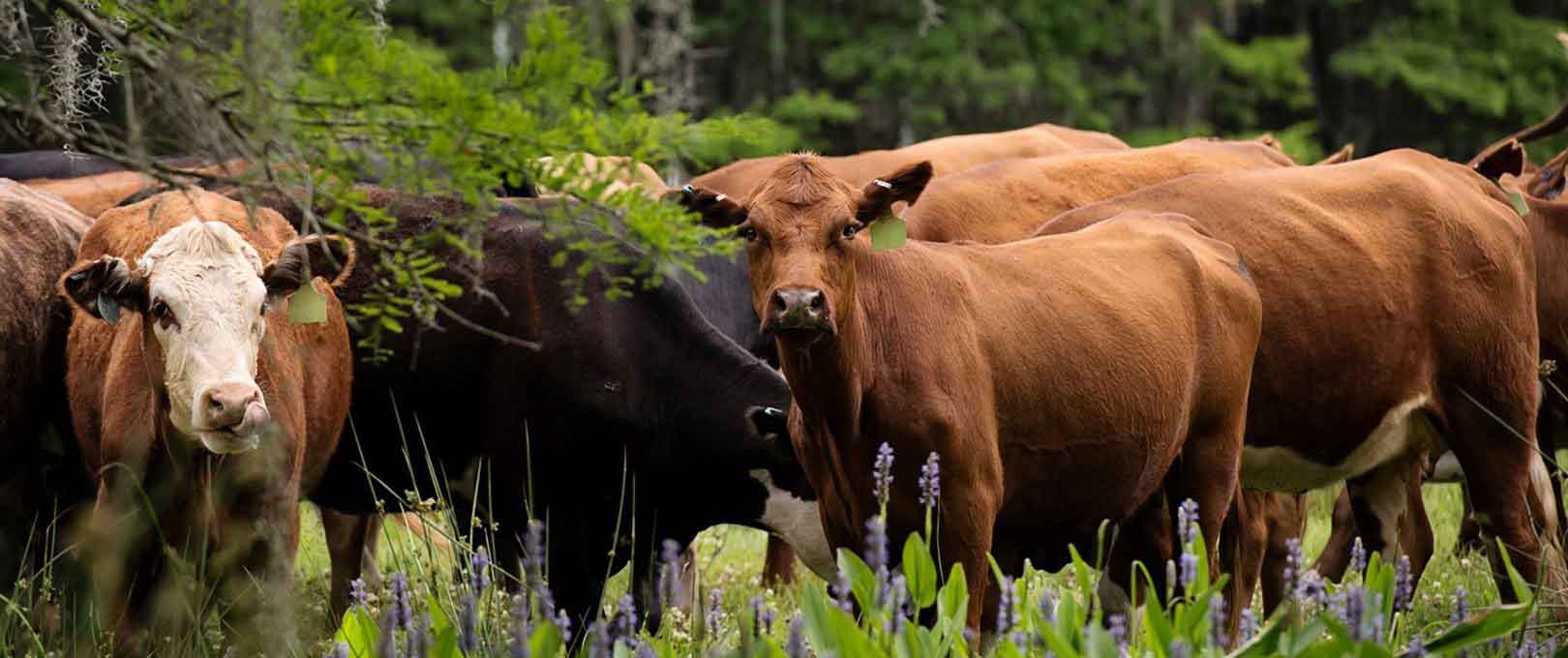
Feed production
We’re helping scale up practices like nutrient management and regenerative farming in cattle feed production, where no-till and cover crops can help maintain healthy soils and promote carbon sequestration.
Key opportunities
Cattle feed traditionally includes a combination of grass, hay and silage. Once cattle leave the ranch to spend their finishing months in a feedyard, they are fed a nutritionally balanced, grain-based diet.
As an easily digestible feed, grain-based diets contribute to fewer cattle-related emissions and are a key factor in why North American emissions per animal are lower compared to other regions. Inclusion of by-products from other processes, such as distillers’ grains that might otherwise go to waste, also helps drive down the “feedprint” of cattle.
By focusing on innovative solutions like nutrient management and regenerative row crop farming for cattle feed ingredients, we can continue to embed sustainability throughout our industry.
Sustainable solutions
We are partnering with farmers to prioritize soil health by reducing the impact of feed production techniques. By encouraging regenerative agriculture practices such as no-till, cover crops and crop rotations, we are working together to cultivate healthier, more resilient soils which, in turn, support more sustainable feed.

Cultivate in action
Regenerative agriculture: working together to protect agriculture’s most precious resource
To advance our aim of securing the future of feed production, we partnered with The Nature Conservancy, McDonald’s and Target to promote regenerative agriculture practices among farmers in Nebraska. Through $8.5 million in investments, the collaborative project will directly support farmers, representing 100,000 acres of row crops, to adapt to the impacts of climate change. With practices that are proven to protect the soil, this approach has the potential to sequester 50,000 metric tons of carbon dioxide over the five-year project timeframe.
This partnership will contribute to Cargill’s wider commitment to promote regenerative agriculture across North American farmland, boosting the health of farmlands to benefit farmer livelihoods and communities. Together, we are unlocking one of agriculture’s greatest opportunities to mitigate climate change and secure the future of feed production.

Partnering for progress
In a supply chain as complex as that for beef, advancing and evolving how things are done is not a straightforward task. Achieving our 2030 goals will require collective action, and we are forming strategic partnerships that will help us get there.
- Source: Regenerative agriculture is getting more mainstream. But how scaleable is it?, AgFunderNews
- Source: Impact of no-till, cover crop, and irrigation on Cotton yield, Agricultural Water Management
- Source: Positive but variable effects of crop diversification on biodiversity and ecosystem services, bioRxiv